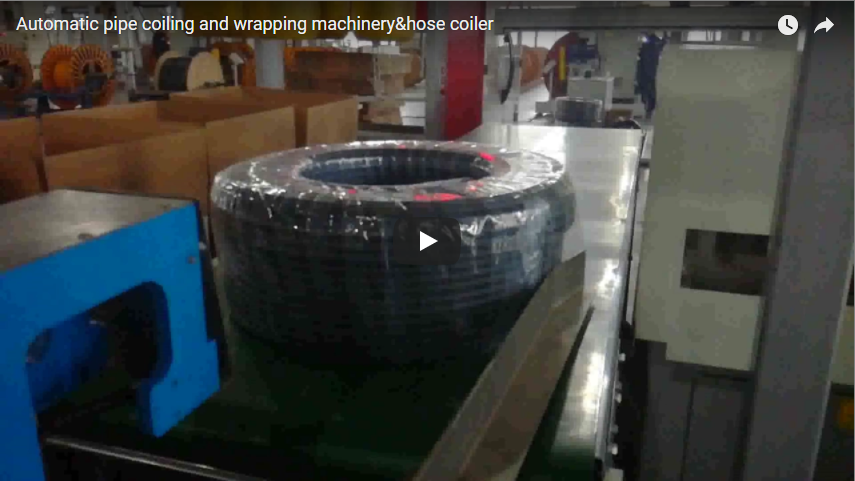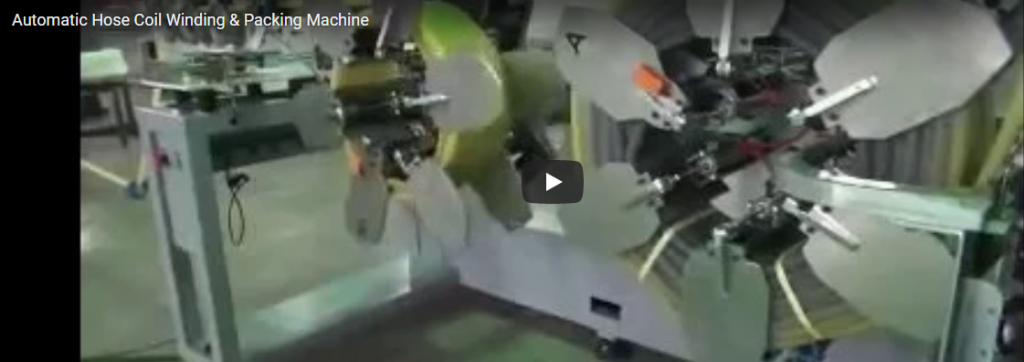Advancing Extrusion Lines: The Engineering Behind Automatic Pipe Winding and Strapping Systems
In modern extrusion processes for pipes, hoses, conduits, and tubing, downstream handling represents a critical bottleneck that impacts overall efficiency and product quality. Manual or semi-automatic coiling and securing methods often introduce inconsistencies, potential product damage, and significant labor costs. Addressing these challenges requires sophisticated automation, exemplified by integrated automatic pipe winding and strapping machines.
Core Technology: Precision Winding and Tension Control
The fundamental principle of an automatic coiler involves precise winding onto a spool or forming a spool-less coil, followed by secure strapping for handling and transport. Key engineering aspects include:
- Winding Mechanism: Typically employs a rotating coiling head or basket synchronized with the extrusion line speed. Advanced systems utilize servo drives for precise speed matching and dynamic adjustments. The traversing unit ensures level winding, creating neat, stable coils crucial for subsequent handling and customer presentation. As detailed in patents like US Patent No. X,XXX,XXX concerning "Automated Winding Tension Control," maintaining consistent tension is paramount to prevent pipe deformation or stretching.
- Tension Control Systems: Sophisticated coilers integrate dynamic tension control, often using dancer arms with feedback sensors or load cells integrated into the winding path. This ensures that the tension applied remains within specified limits for the material type and dimensions, regardless of variations in line speed or coil diameter buildup. Research published in journals like the Journal of Manufacturing Processes highlights the correlation between precise tension control and final product dimensional stability.
- Control and Automation: Programmable Logic Controllers (PLCs) form the brain of the system, managing synchronization, length measurement (via encoders or laser sensors), cut initiation, coiling parameters, and strapping sequences. Human-Machine Interfaces (HMIs) provide intuitive operator control, recipe management for different product types, and diagnostic feedback. Integration with upstream extrusion controls via protocols like OPC-UA or EtherNet/IP allows for seamless line operation.
Integrated Strapping: Securing the Coil
Once the desired length is coiled, an integrated strapping unit automatically secures the product.
- Strapping Heads: Modern systems employ robust strapping heads compatible with Polypropylene (PP) or Polyethylene Terephthalate (PET) straps. Sealing methods commonly include heat sealing or friction welding, providing high joint efficiency. Multiple straps (typically 2 to 4) are applied radially to maintain coil integrity.
- Automation: The process involves automatic strap feeding, tensioning, sealing, and cutting, executed within seconds to maintain high throughput. Sensors confirm strap presence and proper tensioning, minimizing errors.
Fhopepack's Automated Coiling Solution: Design and Application
Fhopepack's automatic hose and pipe coiling and strapping system represents a practical implementation of these advanced engineering principles. It is engineered to replace labor-intensive manual or semi-automatic operations, offering significant advantages:
Key Design Features and Specifications:
- Operational Mode: Fully automatic coiling, cutting, and strapping sequence.
- Material Compatibility: Designed for a range of flexible and semi-rigid products including PE, PEX, PVC pipes, conduits, and various hose types.
- Control System: PLC-based with HMI for ease of operation and parameter setting.
- Sensors: Advanced sensors for accurate length measurement, coil diameter monitoring, and sequence confirmation.
- Strapping System: Integrated automatic strapping unit for secure coil packaging.
- Construction: Robust build for durability and reliability in industrial environments, minimizing maintenance requirements.
- Integration: Designed for straightforward integration into existing extrusion lines.
Performance and Economic Benefits:
- Increased Throughput: Dramatically reduces cycle times compared to manual methods, directly boosting production output. Industry benchmarks suggest automation can increase packaging speeds by over 50%.
- Improved Consistency: Ensures uniform coil dimensions, winding quality, and strap placement, enhancing final product presentation and consistency.
- Reduced Labor Costs: Minimizes the need for manual handling during the coiling and strapping phases, allowing personnel reallocation to higher-value tasks.
- Enhanced Product Protection: Proper tension control and secure strapping reduce the risk of product damage during handling, storage, and transportation.
- Improved Safety: Automates repetitive and potentially strenuous manual tasks, reducing ergonomic risks.
Investing in advanced automation like Fhopepack's automatic pipe winding and strapping machine coiler provides a tangible return on investment through increased efficiency, improved product quality, and reduced operational costs. Businesses can achieve greater competitiveness in demanding markets by optimizing their downstream extrusion processes.
For detailed specifications, customization options, and integration support tailored to specific production requirements, please contact Fhopepack directly or visit their website. Their engineering team can provide expert consultation to optimize your pipe and hose packaging operations.
For related automated solutions for different materials, consider exploring automatic steel wire winding and packing machines: https://www.fhopepack.com/Automatic-Wire-Winder/






